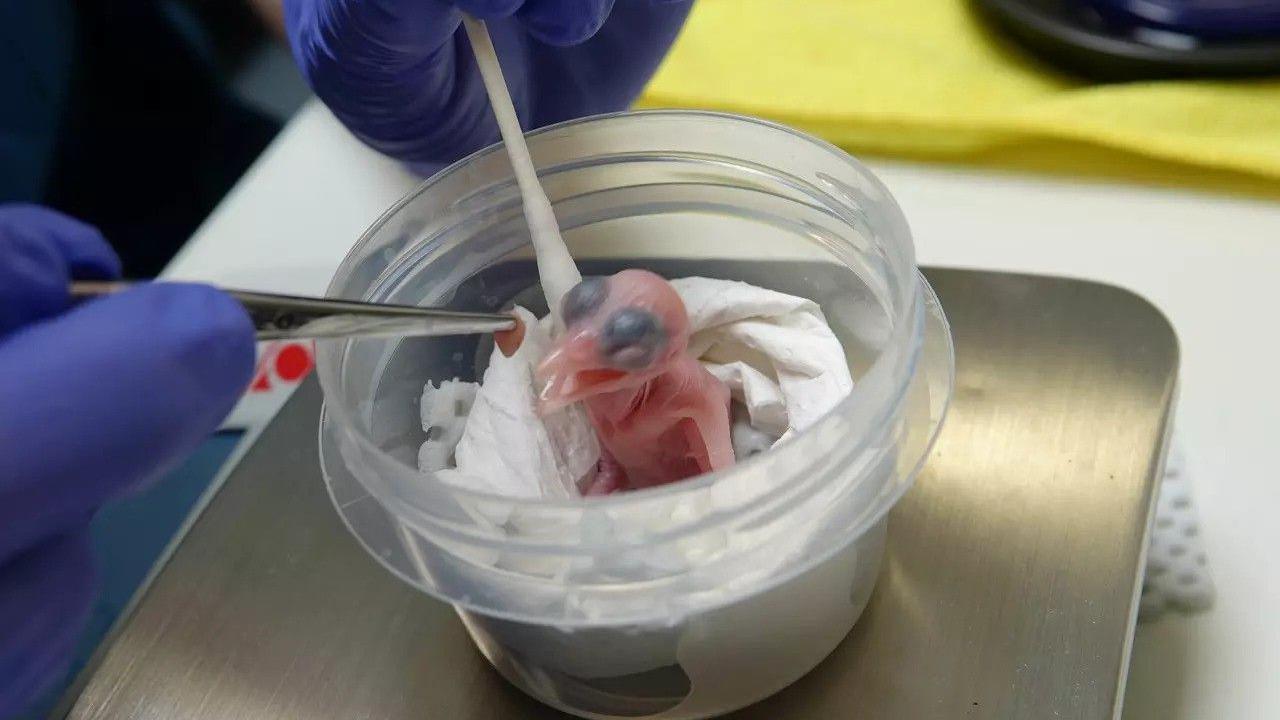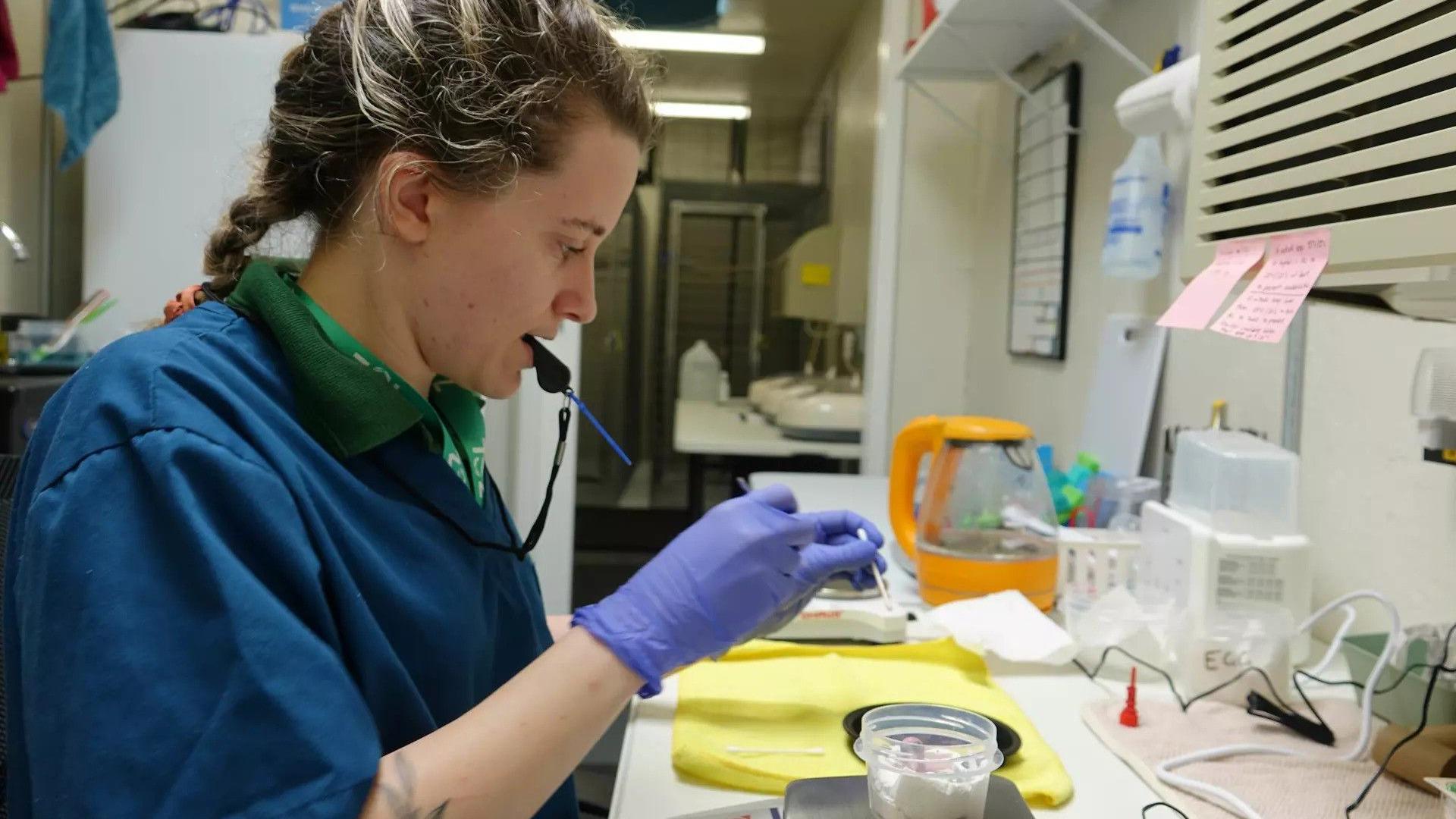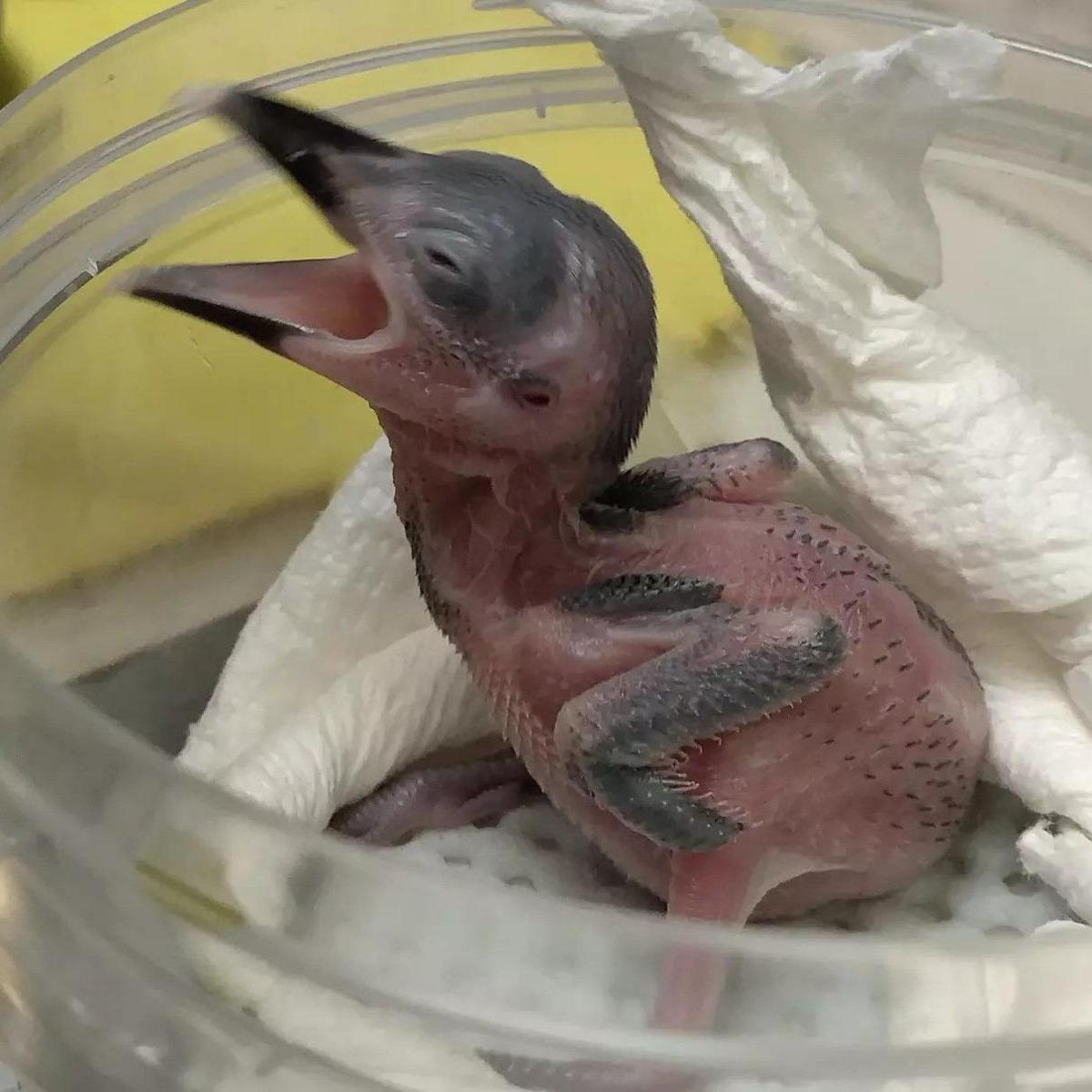Sihek chick is 'huge beacon of hope' for species

The female sihek chick is being cared for by specialist zookeepers
- Published
A newly hatched chick is a "beacon of hope" for a species of bird that is extinct in the wild, a London zookeeper has said.
The baby sihek, also known as the Guam kingfisher, hatched at a zoo in Kansas in the United States last month.
The species has not been seen in the wild since the late 1980s but it is hoped an international collaboration between experts will enable it to be re-introduced to its native territory.
A spokesperson for the Zoological Society of London (ZSL) said the female chick marked a "key milestone" for the project.
Siheks once flourished on the North Pacific island of Guam but the accidental introduction of the brown tree snake to the island in the 1940s wiped out many native birds, bats and lizards, ZSL said.
The last wild sighting of a sihek was in 1988 and the birds are now considered Extinct in the Wild by the International Union for Conservation of Nature.
There are currently only 141 siheks left in the world, all under human care.
The sihek recovery program is working to establish a temporary wild population on the American island Palmyra Atoll before their eventual return to Guam, a US territory.

The chick will soon be covered in blue and cinnamon-coloured plumage
The chick is being cared for around-the-clock by a team of specialists to ensure the "precious youngster’s survival", ZSL said.
Vets help dormice get ready for release into wild
- Published19 May 2024
London Zoo seeks memories to mark 200th anniversary
- Published29 April 2024
Baby vulture is 'key step forward' for species
- Published24 April 2024
Bird keeper Charlotte James said: "With her eyes closed, a distinct lack of feathers and weighing no more than a pencil, this chick entered the world rather strange looking and completely dependent on us.
"But in just 30 days, she’ll have grown almost 10 times heavier and be covered in beautiful blue and cinnamon-coloured plumage."
Ms James said each individual chick that successfully hatches was a "huge beacon of hope for the future of this species”.

Charlotte James is part of an around-the-clock team caring for the chick
The chick, that hatched at Sedgwick County Zoo, is currently fed a diet of mice and insects by caretakers - but if it is successfully released in Palmyra Atoll's forests, it will need to hunt for food, including insects and geckos, ZSL said.
Professor John Ewen, from conservation charity’s Institute of Zoology, said the network of conservation zoos had played a "vital role" in saving the species from extinction.
“Returning species to the wild is a long, carefully planned-out journey built upon global scientific expertise," he said.
"When a species is as close to the edge of extinction as the sihek, low population numbers mean we often face challenges such as a lack of eggs and reduced fertility.
"As a result, only one of the seven eggs that have made the journey to Sedgwick County Zoo so far has successfully hatched – highlighting not only how special this tiny chick is, but why it’s so vital that we continue to build large populations of Extinct in the Wild species under human care and work as quickly as possible to restore their wild numbers."

The chick is currently being fed a diet of mice and insects
Listen to the best of BBC Radio London on Sounds and follow BBC London on Facebook, external, X, external and Instagram, external. Send your story ideas to hello.bbclondon@bbc.co.uk, external